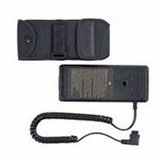Flash Recycle Rate
Flash recycle rate is an important number for any die-hard action photographer to keep in mind.
This is because the average snapshot photogapher will never feel that their flash is limiting their ability to capture a photograph.
Most of us will take a picture with flash...pause to re-compose or change a setting...then take another.
This pause gives the flash unit plenty of time to power up before the next shot.
But what if you're taking a lot of photos in rapid succession in an environment where the light is SO dim that a flash is critical to capturing a decent shot?
Suddenly the recycle rate of your flash unit becomes a lot more important than it was before.
Recycle Rate
The simple definition of a flash recycle rate is this:
The recycle rate of a digital SLR flash is the amount of time it takes for the flash to reach full power after being fired.
There are two key points to bear in mind here:
- You can fire a flash even if it hasn't reached full power
- If the flash has manual control, you can fire it at less than full power
Let's start out by assuming that you're using an external flash in auto mode (since studio strobes have manual control only), and you're letting the flash determine the amount of light it needs to properly illuminate your subject.
The flash is at full power, and you take a shot - your photo is properly exposed.
However, if you squeeze off a second shot before the flash has powered up again, your photo will turn out underexposed.
The flash emits however much light it can - since it hasn't recycled to full power yet - which may be insufficient. If the flash doesn't emit enough light, then your photo turns out too dark.
Now let's assume that you're willing to tinker with the manual mode on your flash unit.
Let's also say that there's a fair amount of ambient light striking your subject, and you just need a little extra "kick" from a flash. In this case, you can set the flash to 1/4 power, which significantly increases the recycle speed of the flash.
In the end, whether you want to take photos in auto mode or manual mode you'll benefit from a flash with a fast recycle rate if you want to take shots in rapid succession.
Recycle Rate Notation
Unlike guide numbers - which take a fair amount of mathematical prowess to comprehend - recycle rate notation is pretty simple.
There's only one thing to keep in mind: a recycle rate time assumes the flash has gone off at full power.
Obviously, if you have the flash manually set to half or quarter power, then it will recycle much faster than what's listed in the spec sheet.
Recycle rates are measured in seconds.
Simple as that.
Let's take a look at four popular flash units from Canon and Nikon so you can see the difference.
| Flash Unit | Recycle Rate | Avg. U.S. Cost |
| Canon 430EX | 4 seconds | $ 240.00 |
| Canon 580EX II | 6 seconds | $ 390.00 |
| Nikon SB-600 | 4 seconds | $ 190.00 |
| Nikon SB-800 | 6 seconds | $ 320.00 |
At first glance, this is a bit deceptive - it appears that the more expensive flash units actually recycle slower than the less expensive ones.
But bear in mind that this is because the more expensive units are also more powerful.
Since they put out more light at full power, they also take more time to recycle back to full power.
Ultimately, a more expensive flash unit will recycle faster than a less expensive one when the two flashes are calibrated to put out the same amount of light.
More Power = Faster Recycle

If you really want to blaze through your flash photos, then you're going to need more power than what's provided by the standard AA batteries that you use with most external flash units.
You get this power by plugging the flash into an external battery pack.
For example, I mentioned above that the spec on the Canon 580EX II says that it takes 6 seconds to recycle to full power. However, if you plug in a Canon CP-E3 external battery pack, that recycle time drops down to a mere 1.7 seconds.
Not only do you get faster flash recycle rates when using an external battery pack, you also get more exposures before the flash power runs out.
External flash battery packs are an essential tool for many wedding photographers who are taking photo after photo with flash and can't afford to take the time to swap out dead batteries.
| Digital SLR Home | Flash Sync Speed |

|



